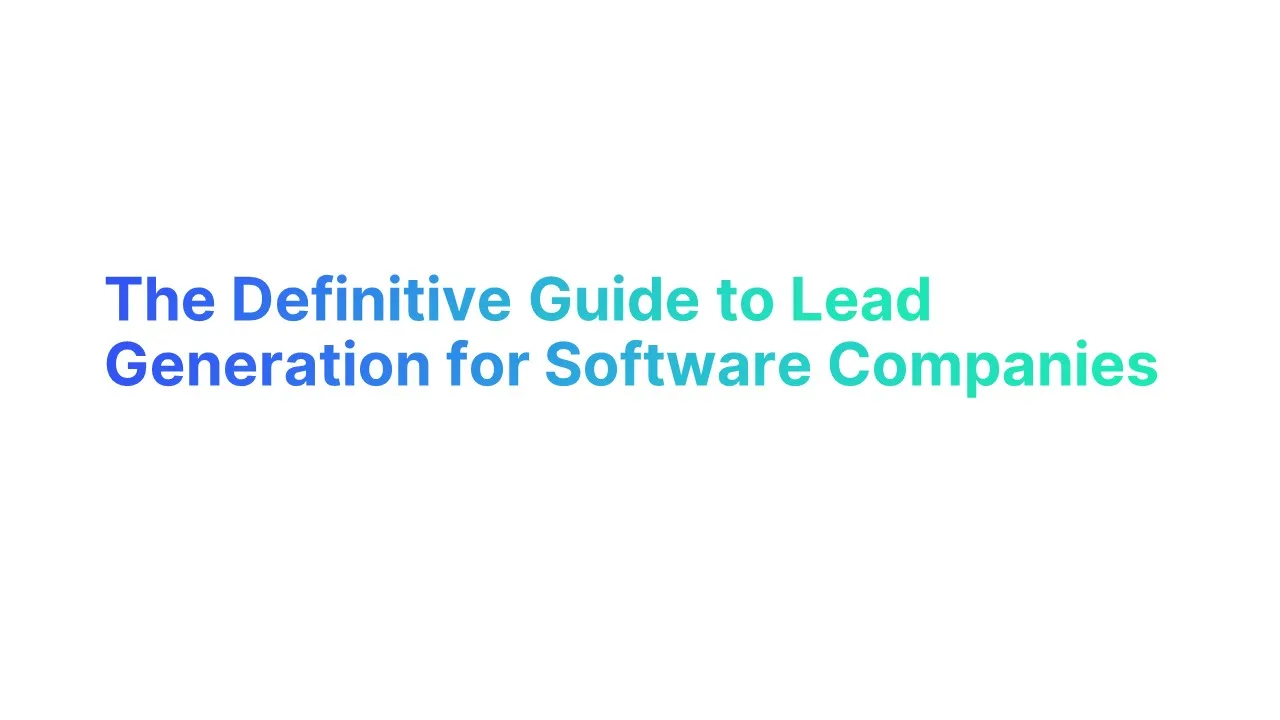Introduction to Lead Generation for Software Companies

Lead generation is the strategic process of stimulating and capturing interest in a product or service for the purpose of developing a sales pipeline. For software companies, this is paramount.
The ability to generate leads for a tech company can lead to:
Increase Visibility: Makes your software solutions more visible to potential leads, thus broadening your market reach.
Drive Revenue: Directly correlates with increased sales opportunities, impacting your bottom line positively.
Enhance Brand Recognition: Consistent lead generation efforts make your brand more recognizable in the tech industry.
Improve Product Development: Feedback from leads can guide product adjustments or innovations.
The Significance of Lead Generation for Growth

Lead generation is not just a tactic; it's a growth strategy for software companies. Here's how it fuels expansion:
Targets the Right Audience: Identifying and focusing on the target audience ensures that marketing efforts are directed toward potential customers most likely to purchase your software.
Builds Relationships: It's about nurturing potential customers and current customers through different stages, from awareness to decision.
Expands Market: Through lead generation campaigns and search engine optimization, software companies can tap into new markets and demographics.
Optimize Sales Funnel: A well-designed lead generation process fills the sales funnel with high-quality leads, streamlining the sales process.
Lead Generation Process for a Software Company
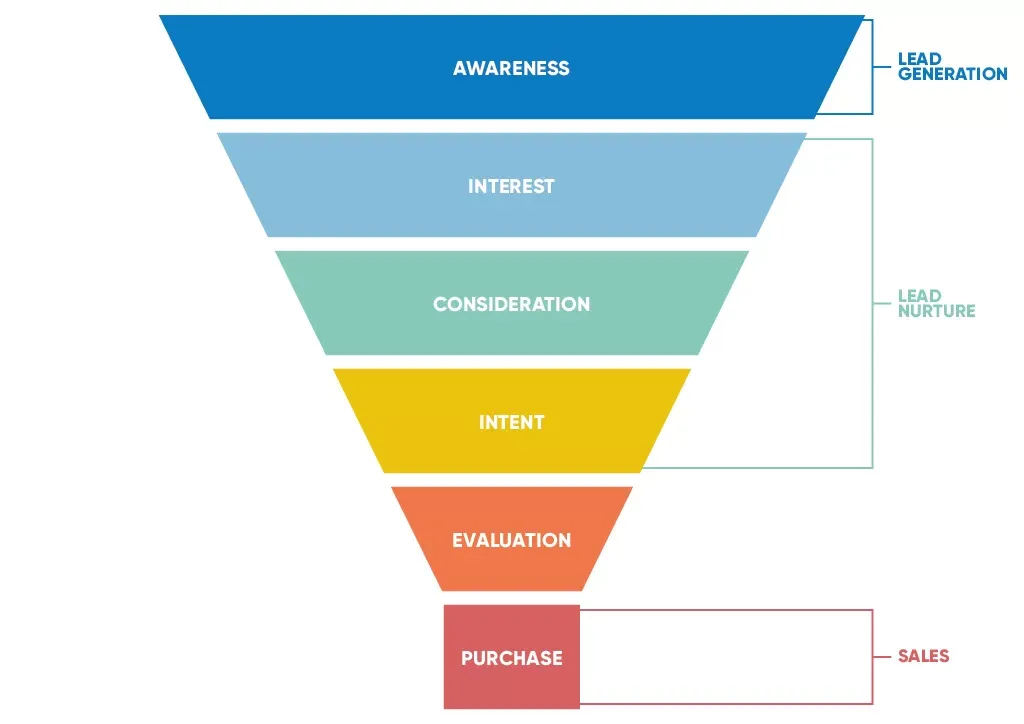
1. Identify Your Target Audience
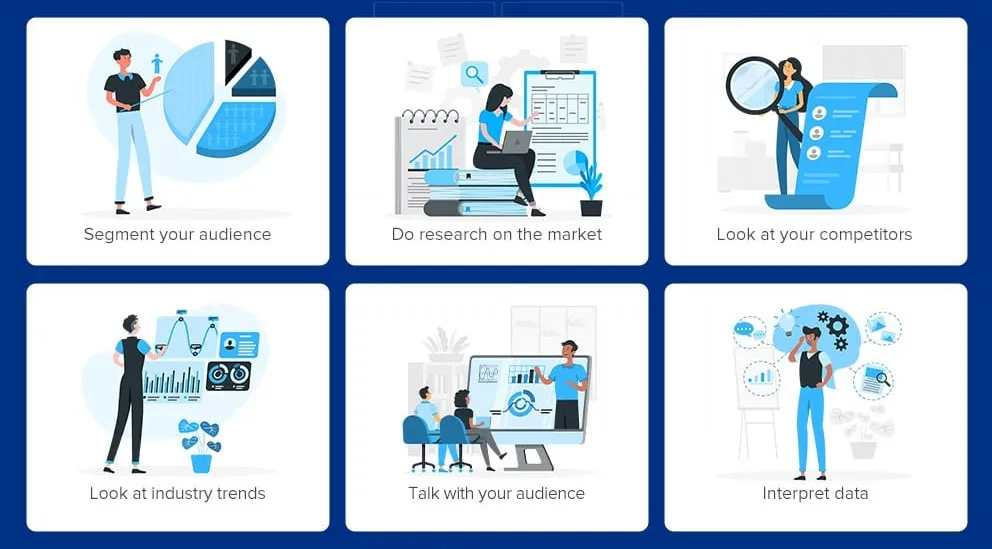
Effective lead generation begins with identifying your target audience. For software companies, this means pinpointing which businesses or individuals will most benefit from your products.
Whether targeting technology companies, startups, or large enterprises, understanding your audience is crucial.
This step guides your marketing campaigns and helps in crafting messages that resonate with potential customers, increasing the relevance and impact of your lead generation efforts.
To know more on how to define your Target Audience, you can read our blog - Target Audience: Tips on how to identify them for better sale.
2. Gather Lead Data
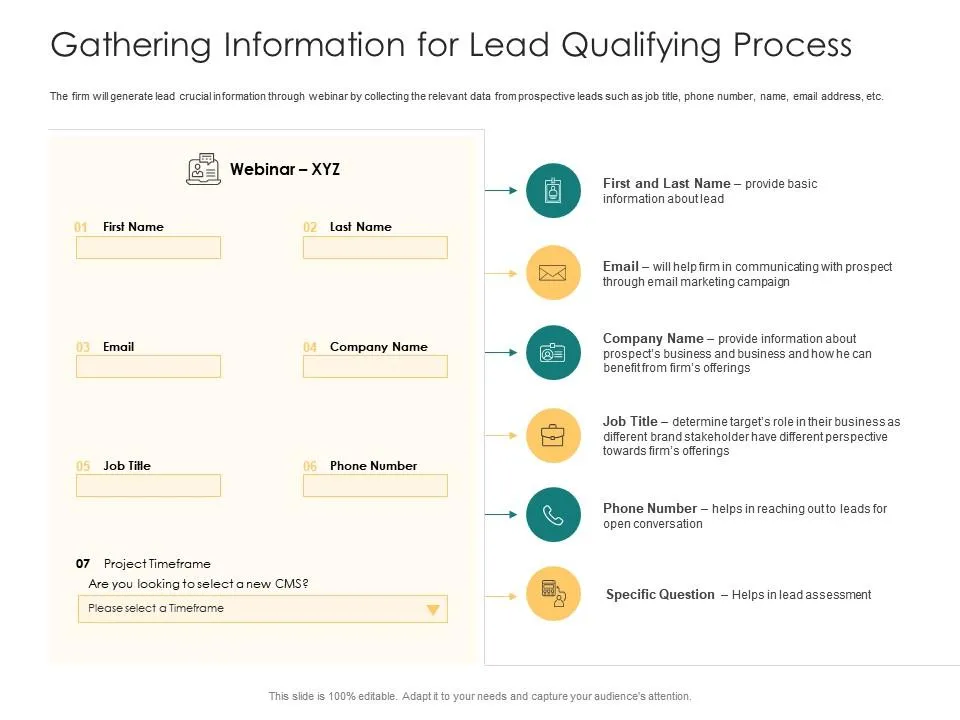
Gathering lead data involves collecting information about potential customers through various channels, including social media platforms, website interactions, and direct inquiries.
Utilizing lead generation tools like SEO-optimized landing pages and engaging content marketing can enhance this data collection.
Accurate lead data is essential for understanding customer needs and tailoring your lead generation strategies effectively.
3. Qualify Leads
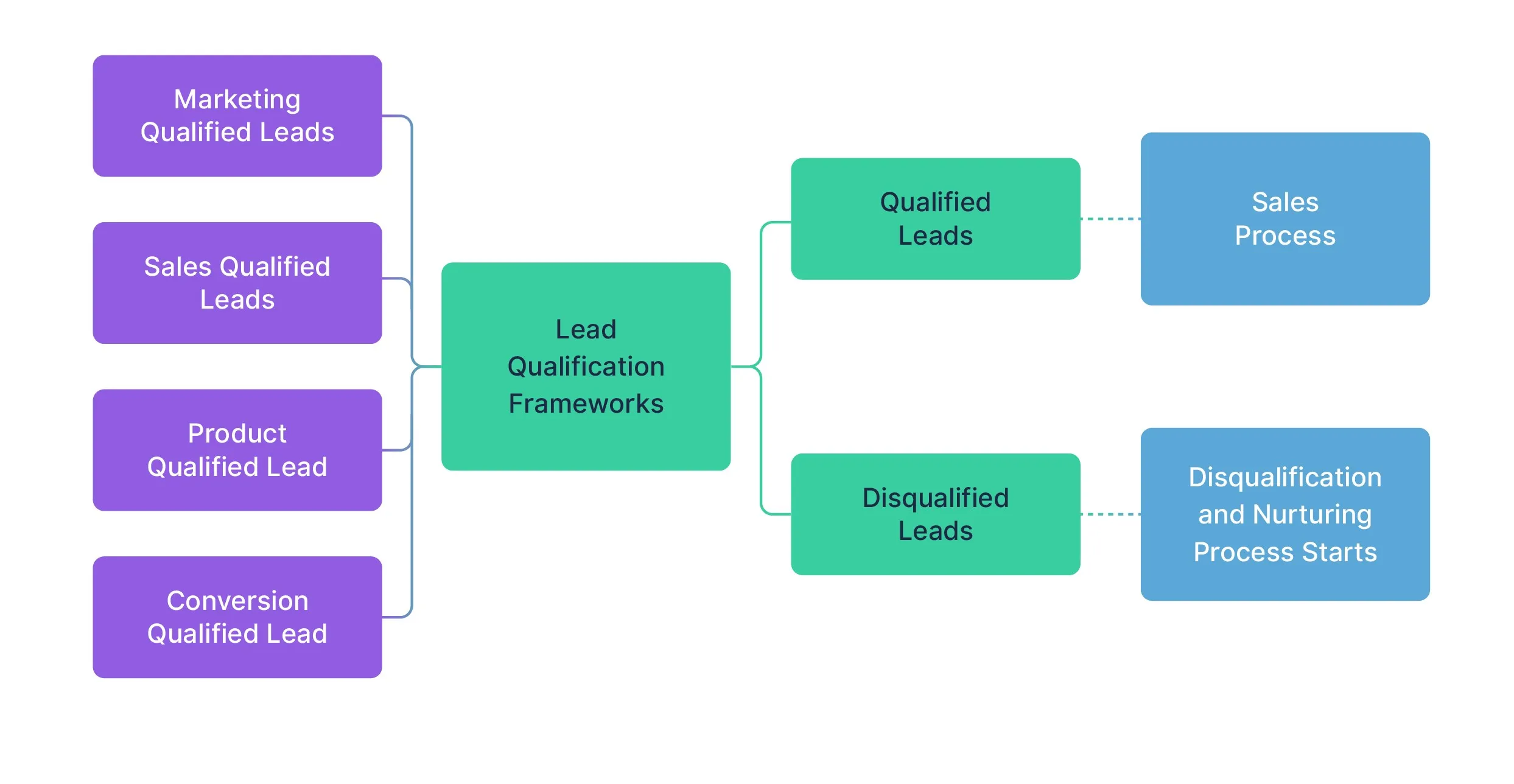
Qualify your leads to determine their potential as customers. This process separates the most promising prospects from the less likely, focusing on those who show a genuine interest or need for your software.
Tools and techniques like lead scoring help in this phase, allowing you to prioritize leads that are more likely to convert, thus making your sales process more efficient.
To know more on how to get qualified leads, you can read our blog - How To Get Qualified Leads: 11 Ways To Qualify Leads and Increase Conversions
4. Lead Engagement
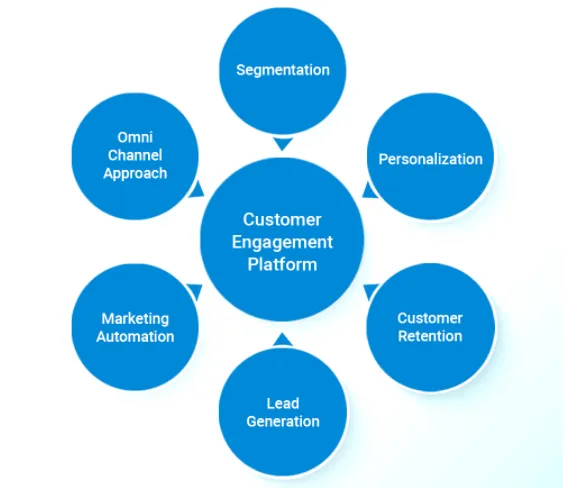
Lead engagement involves initiating contact and building a relationship with your leads.
Utilize email marketing tactics such as drip campaigns and targeted offers to keep potential customers engaged. This step is about maintaining the interest of your leads and keeping your software solution top-of-mind, guiding them closer to a purchase decision.
5. Nurture Leads

Consistent communication and providing valuable information are key. Share relevant content that addresses their challenges and showcases your software’s benefits.
This long-term approach aims to build trust and credibility, gradually moving leads through the sales funnel towards a purchase.
To know more on how to nurture leads, you can read our blog - 10 Must-Try Lead Nurturing Tips: Building Relationships And Generating Leads
6. Lead Conversion
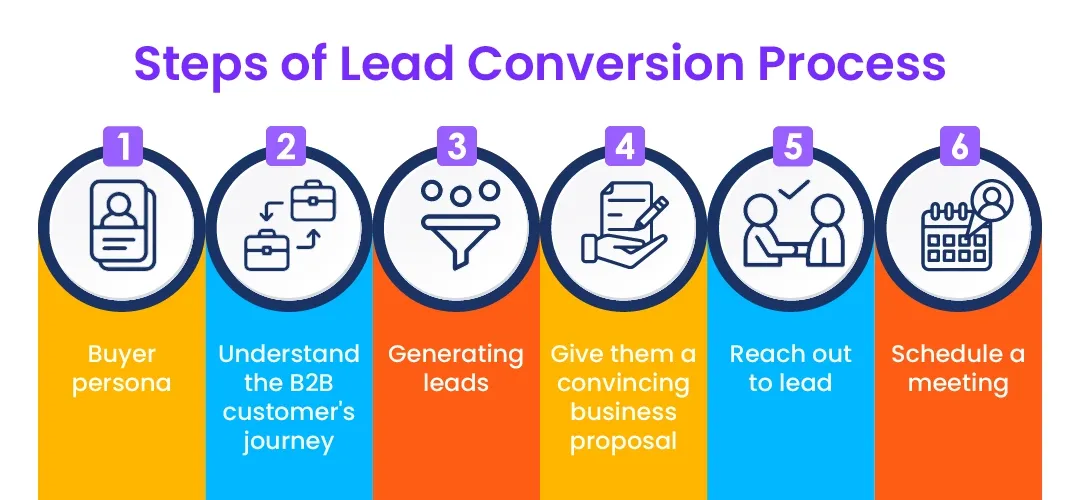
The goal of all lead generation efforts is lead conversion – turning interested leads into paying customers.
Effective sales strategies, clear communication of your software’s value, and demonstrating how it addresses specific pain points are crucial in this phase. Conversion strategies may include offering free trials, showcasing testimonials, or providing personalized demos.
7. Analyze and Refine

Finally, continuously analyze and refine your lead generation process. Assess the performance of your strategies, from social media marketing to email campaigns, and use these insights to improve.
Regular analysis helps in identifying successful tactics and areas for improvement, ensuring your lead generation approach remains effective and competitive.
8. Balance Outbound and Inbound Strategies

Balancing outbound and inbound strategies for lead generation in software companies means effectively combining both approaches to maximize lead generation.
Outbound strategies involve proactive outreach, like cold calling, email marketing, and attending trade shows. Inbound strategies focus on attracting customers through content marketing, SEO, social media, and other methods that make the company easily discoverable to potential leads.
The balance is achieved by integrating both strategies to cater to different segments of the target market and stages of the customer journey, ensuring a comprehensive approach to generating leads.
Lead Generation Strategies for Software Companies
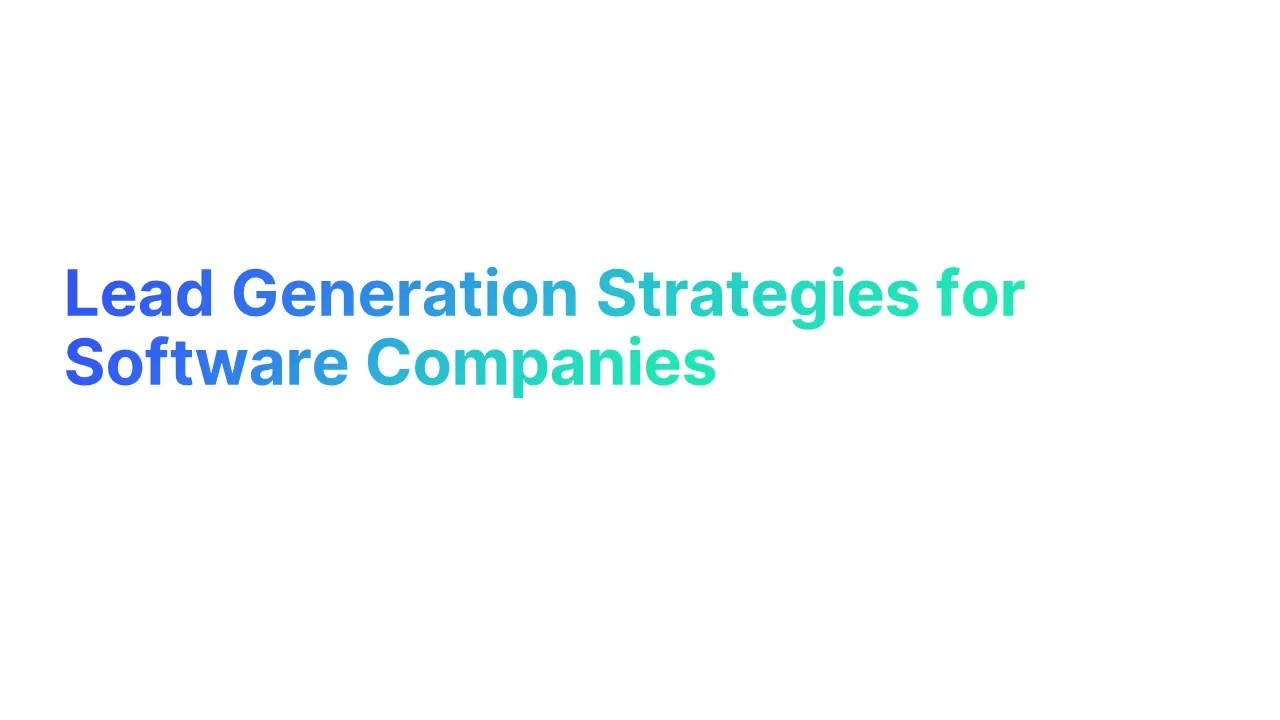
Best Lead Generation Techniques:
1. Emphasize Content Marketing

Content marketing is a potent tool for attracting potential leads. This involves:
Blog Posts: Offering in-depth knowledge about software solutions, addressing common industry pain points, and integrating SEO techniques to enhance online visibility.
Infographics: Presenting complex data or software features in an easily digestible format, ideal for sharing on social media platforms.
Videos: Creating engaging product demos or customer testimonials, which can be more effective than text in showcasing the benefits of your software.
2. Leverage Email Marketing Tactics
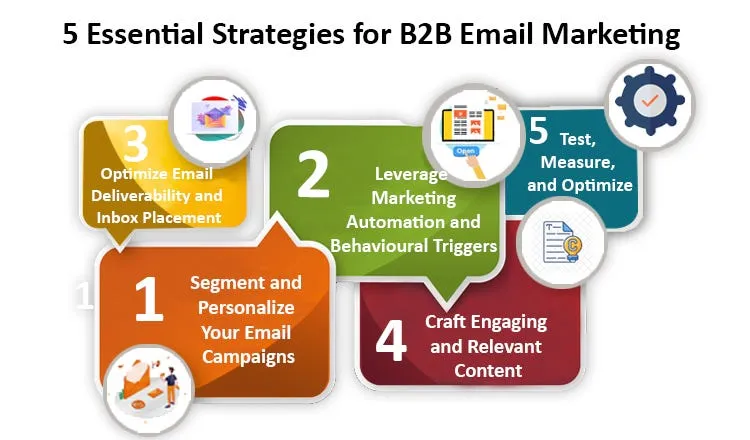
Email marketing is a direct line to potential customers. Key tactics include:
Drip Campaigns: Automated emails that provide information tailored to where the potential client is in the sales process.
Promotional Emails: Announcing new software features, updates, or special offers to generate interest and prompt action.
Retargeting Campaigns: Targeting individuals who have shown interest but haven't made a purchase, reminding them of your software’s benefits.
3. Run SEO and Pay-Per-Click (PPC) Campaigns

Combining SEO with PPC can maximize online visibility:
Keyword Optimization: Focusing on keywords like 'software company,' 'lead generation tool,' and 'tech industry' to improve search rankings.
PPC Campaigns: Targeted ads on search engines and social media platforms, capturing the attention of potential leads quickly.
4. Harness Social Media Platforms

Social media marketing is invaluable for reaching a broader audience:
Engage with potential customers and tech companies on platforms like LinkedIn and Twitter.
Establish brand recognition and trust by disseminating valuable content, industry expertise, and corporate news
6. Conduct Market Research
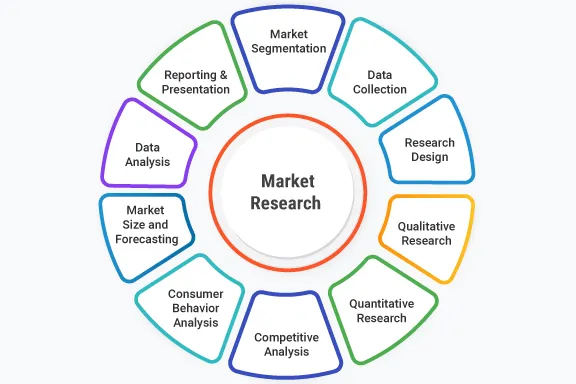
Understanding market needs and trends is vital:
Conduct surveys and research to understand what potential customers seek in software solutions.
Tailor your lead generation strategies based on these insights.
7. Host Webinars and Online Events

Engaging with your audience through webinars and online events can:
Provide a platform to demonstrate your expertise.
Offer direct interaction with potential leads, helping to establish trust.
Identify and Target Potential and Qualified Leads for Tech Companies

A Great lead generation strategy would first identify and target potential leads, here is how to identify and target customers
1. Utilize Market Research
Conduct in-depth market research to understand the landscape of the technology sector.
Focus on identifying pain points and needs of both potential customers and technology companies.
Use tools like search engines to gather data on market trends and customer behavior.
2. Implement SEO Techniques
Optimize your website and online content with SEO strategies to attract potential leads actively searching for tech solutions.
Focus on keywords that potential leads are likely to use when looking for technology solutions.
3. Engage in Social Media Marketing
Use platforms like LinkedIn and Twitter to connect with tech industry leaders and potential leads.
Share valuable content, industry insights, and engage in discussions related to software development and technology trends.
4. Use Data Analytics
Employ data analytics tools to analyze market trends, customer behavior, and purchasing patterns.
This helps in identifying businesses or individuals who are more likely to be interested in your tech products or services.
Synergy Between Sales and Marketing Teams: Enhance Lead Generation Efforts
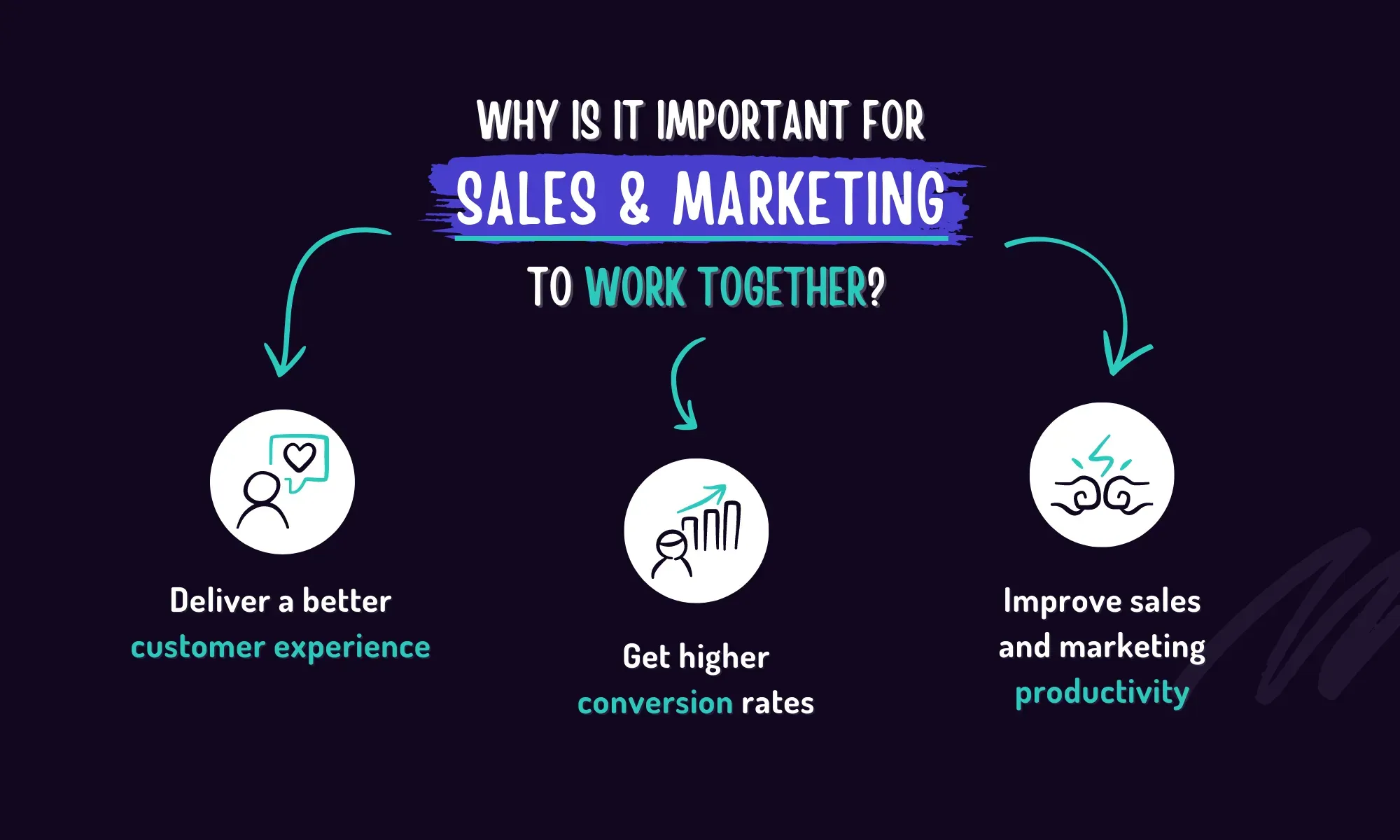
The synergy between sales and marketing is indispensable for lead generation in software companies. It ensures a unified approach to understanding and engaging the target audience, enhances the efficiency of lead generation tools and strategies, and ultimately leads to higher conversion rates.
This collaborative effort is a key driver in achieving sustained growth and success in the business of software development companies
Let’s explore why this collaboration is essential:
1. Unified Understanding of the Target Audience
Both teams need to have a cohesive understanding of their target audience, which includes tech companies, potential customers, and technology-oriented leads. This alignment ensures that marketing campaigns are tailored to the audience’s needs, enhancing the effectiveness of content marketing and SEO strategies.
2. Streamlined Lead Generation Efforts
Collaboration leads to more efficient lead generation efforts. With the sales team’s insights into customer interactions and the marketing team’s expertise in generating leads through digital channels, including social media marketing and email marketing, the process becomes more targeted and effective.
3. Effective Utilization of Lead Generation Tools
Sales and marketing can jointly leverage lead generation tools and CRM systems, ensuring a seamless flow of lead information. This enables both teams to track and nurture leads through the sales funnel more effectively.
4. Optimized Content and SEO Strategies
The marketing team can create content that resonates with the audience, informed by the sales team's on-the-ground insights. This content, whether it’s blog posts, infographics, or landing pages, can be SEO-optimized to attract high-quality leads.
5. Enhanced Lead Qualification and Scoring
Working together, sales and marketing can refine lead qualification criteria and scoring methods. This synergy ensures that the leads passed on to the sales team are genuinely interested and more likely to convert, enhancing the overall lead generation strategy.
6. Data-Driven Marketing Campaigns
Joint analysis of data and metrics allows both teams to understand the effectiveness of different strategies, such as email marketing campaigns or social media ads. This data-driven approach leads to continuous improvement in targeting and reaching potential leads.
7. Increased Conversion Rates
When sales and marketing strategies are aligned, the journey from lead generation to conversion becomes more cohesive. Tactics like offering free trials or creating targeted marketing campaigns become more impactful.
Lead Generation Tools for a Technology Company

1. Content Marketing Tools
Tools like HubSpot or WordPress are vital for executing content marketing strategies. They help in creating and distributing valuable content, such as blog posts and infographics, which attract potential leads through SEO and establish the company as a thought leader in the software industry.
2. Social Media Marketing Tools
Platforms like Hootsuite or Buffer enable efficient management of social media marketing campaigns. These tools allow software companies to schedule posts, track engagement, and analyze the performance of their content on various social media platforms, reaching a broad audience, including tech companies and potential customers.
3. Lead Capture and Generation Tools
Tools like Leadpages or Instapage facilitate the creation of effective landing pages that capture leads. For a software company, this means creating targeted pages that highlight software features, offer free trials, and collect visitor information for follow-up.
4. Webinar Hosting Platforms
Platforms such as GoToWebinar or Zoom are excellent for hosting webinars. Software companies can use these tools to demonstrate their products, share industry insights, and engage directly with a target audience, effectively generating high-quality leads.
5. Referral Marketing Software
Tools like ReferralCandy or Ambassador help in implementing referral marketing strategies. They encourage current customers to refer new leads, potentially opening doors to new markets and qualified leads for the software company.
6. SEO and SEM Tools
Besides Google Analytics, tools like Ahrefs or Google Ads are essential for both SEO and SEM. They help in keyword research, website optimization, and running targeted ad campaigns, crucial for attracting leads actively searching for technology solutions.
7. Customer Feedback Tools
Software like SurveyMonkey or Qualaroo can be used to gather customer feedback. Understanding customer needs and pain points helps software companies tailor their products and marketing strategies, making their lead generation efforts more effective.
8. Chatbot and AI Tools
AI-powered tools like Drift or Intercom offer chatbot services. These can be used on software company websites to engage visitors in real-time, answering queries and capturing lead information effectively.
9. Affiliate Marketing Platforms
Platforms like ShareASale or ClickBank enable software companies to partner with affiliates who promote their products. This can expand the company’s reach and attract new leads from diverse sources.
Best Practices to Generate High-Quality Leads for a Software Company

To generate high-quality leads for a software company, implementing specific best practices tailored to attract leads more likely to convert into customers is crucial.
1. Leverage Customer Insights and Data Analytics
- Deep Data Analysis: Analyze customer data extensively to understand your best lead profiles. Look for patterns in high-converting leads, focusing on industry, company size, or specific challenges.
- Targeting Strategy Adjustment: Modify your strategies based on these insights to attract similar high-quality leads, a key aspect of effective lead generation for software companies.
2. Content Personalization and Advanced SEO
- Targeted Content Creation: Develop content tailored to the specific needs of your target audience, such as decision-makers in tech companies. Delve into lodely to understand common challenges in software engineering. Personalize for different segments, including end-users of the software.
- Long-Tail SEO Focus: Use advanced SEO techniques with a focus on long-tail keywords, often specific and less competitive, thus attracting leads closer to making a purchase decision.
3. Engagement through Thought Leadership
- Industry Expertise Sharing: Position your company as a thought leader in the software industry. Publish whitepapers and research reports that forecast trends and future developments.
- Credibility Building: This type of content not only attracts quality leads but also establishes your credibility and trustworthiness, influencing a lead’s decision-making process.
4. Utilize Account-Based Marketing (ABM)
- Tailored Marketing for High-Value Accounts: Implement ABM to customize marketing for specific, high-value accounts. Identify potential major clients or strategic partners for personalized campaigns.
- Resource Focus: Direct resources towards a smaller number of high-potential accounts to increase conversion chances, using strategies like outbound lead generation.
5. Advanced Lead Scoring Models
- Attribute-Based Scoring: Develop sophisticated lead scoring models based on various attributes, such as engagement level, content interaction, and web page visits.
- Sales Feedback Integration: Continuously refine your lead scoring model, incorporating sales team feedback to ensure its accuracy in identifying high-quality leads.
6. Leverage Customer Testimonials and Case Studies
- Success Story Showcasing: Display testimonials and success stories from satisfied customers, especially those in industries similar to your target leads.
- Case Study Utilization: Use detailed case studies as evidence of your software’s value, appealing to leads seeking comparable solutions.
7. Integrate Advanced Tech Tools
- AI and Machine Learning: Employ AI tools for predictive lead scoring and deeper lead behavior insights.
- Chatbot Engagement: Utilize chatbots on your website for real-time visitor engagement, effectively capturing lead information.
8. Refine Lead Nurturing Processes
- Structured Nurturing Program: Establish a well-defined lead nurturing program offering valuable information consistently through the buyer's journey.
- Personalized Engagement: Use personalized email sequences and educational webinars to maintain engagement, supplemented by targeted retargeting campaigns.
9. Focus on Post-Sale Relationships
- Customer Relationship Strengthening: Maintain robust relationships with existing customers, as they can be a source of referrals, leading to high-quality prospects.
- Referral Program Implementation: Create a customer referral program, incentivizing clients to refer new leads.
10. Exploring Multiple Channels
- Multi-Channel Strategy: Diversify your lead generation efforts across multiple channels, including social media platforms, content marketing, and direct outreach.
- Channel-Specific Tactics: Tailor your approach for each channel, ensuring that your strategies are aligned with the preferences and behaviors of your target audience.
11. Utilizing Technology Companies’ Networking
- Industry Collaboration: Network with other technology companies to explore co-marketing opportunities and shared lead generation efforts.
- Partnership Benefits: These collaborations can open doors to new markets and lead sources, particularly in the technology sector.
Future Trends: Lead Generation for Technology Companies

Future trends in lead generation for technology companies are likely to be driven by advancements in digital marketing, data analytics, and artificial intelligence to generate more leads.
Here's a direct breakdown:
Artificial Intelligence and Machine Learning
These technologies are revolutionizing lead generation for technology companies. AI and ML enable the analysis of customer data, predicting buying behaviors, and thus generating high-quality leads.
Account-Based Marketing (ABM)
ABM, a great lead generation strategy, focuses on targeting high-value accounts - a method particularly beneficial for software development companies and other technology sectors.
Content Marketing and SEO
High-quality content remains a cornerstone for attracting qualified leads. A technology company that excels in creating relevant content, complemented by SEO, can significantly improve its lead generation.
Social Media and Influencer Marketing
These platforms are essential for lead generation ads and campaigns. Influencer marketing, in particular, can be the best lead generation tool for reaching wider, more engaged audiences.
Virtual and Augmented Reality
These innovative technologies are being utilized by many technology companies for generating leads by offering immersive product experiences.
Chatbots and Virtual Assistants
These digital tools represent a shift in how technology companies work to capture and convert leads, providing instant and personalized interaction.
Data Privacy and Security
As lead gen companies focus on collecting data, adhering to privacy regulations is crucial for maintaining trust and attracting the most qualified leads.
Integration of Sales and Marketing
This trend is about aligning strategies for technology companies to ensure cohesive targeting and nurturing of leads.
Remote Selling and Digital Engagement
Technology companies are increasingly using digital platforms for engaging with prospective customers, an essential part of a lead gen strategy.
Predictive Analytics
Predictive analytics help in identifying potential leads and understanding market trends, guiding technology companies in developing generation strategies for technology.


